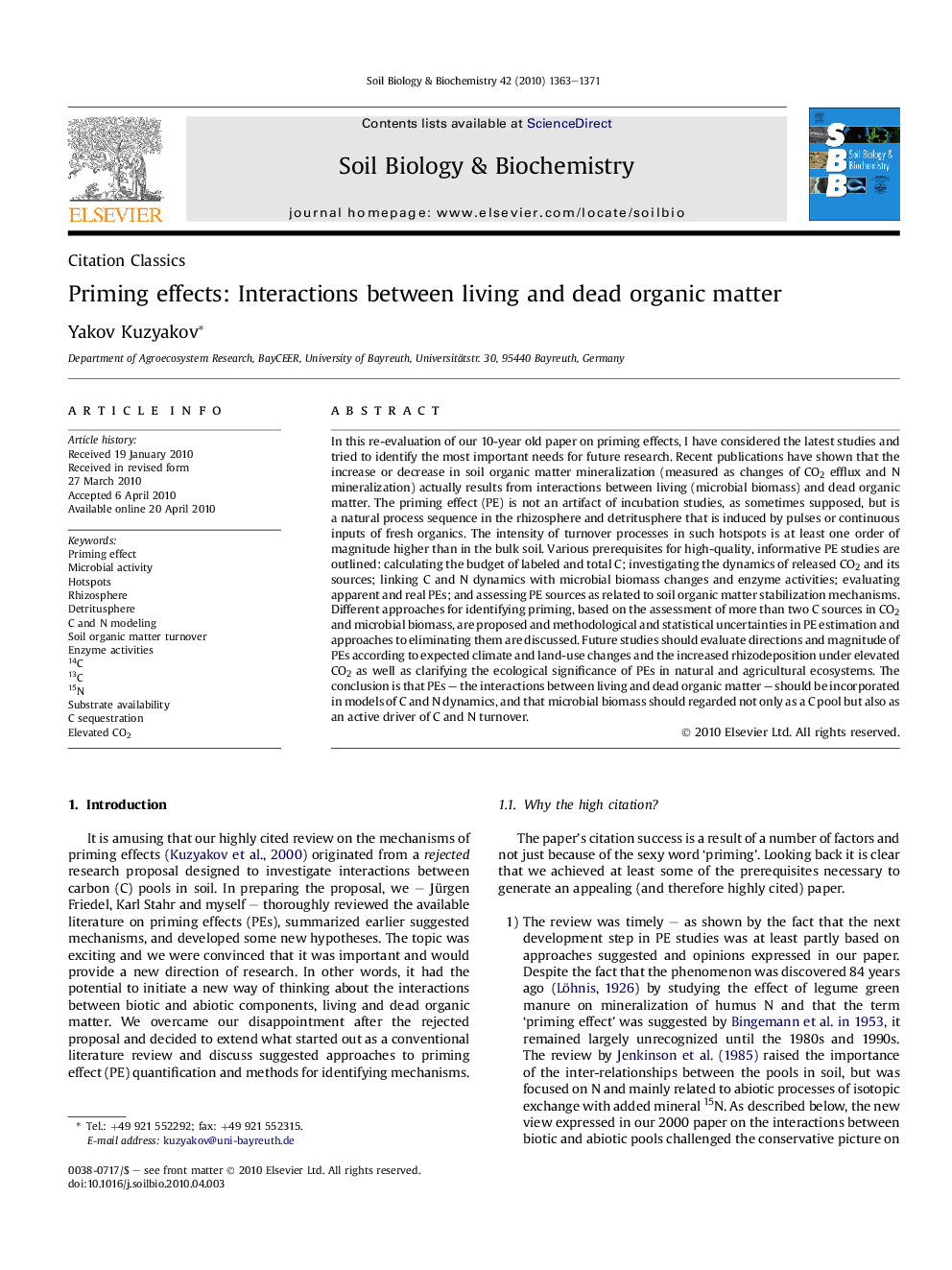| کد مقاله | کد نشریه | سال انتشار | مقاله انگلیسی | نسخه تمام متن |
|---|---|---|---|---|
| 10846105 | 1070002 | 2010 | 9 صفحه PDF | دانلود رایگان |
عنوان انگلیسی مقاله ISI
Priming effects: Interactions between living and dead organic matter
دانلود مقاله + سفارش ترجمه
دانلود مقاله ISI انگلیسی
رایگان برای ایرانیان
کلمات کلیدی
14C13C15NPriming effect - اثر پایهElevated CO2 - افزایش CO2C sequestration - جداسازی CSoil organic matter turnover - جرم مواد آلی خاکSubstrate availability - در دسترس بودن بسترRhizosphere - ریزوسفرMicrobial activity - فعالیت میکروبیEnzyme activities - فعالیت های آنزیمDetritusphere - قطب شمالHotspots - نقاط قوت
موضوعات مرتبط
علوم زیستی و بیوفناوری
علوم کشاورزی و بیولوژیک
دانش خاک شناسی
پیش نمایش صفحه اول مقاله

چکیده انگلیسی
In this re-evaluation of our 10-year old paper on priming effects, I have considered the latest studies and tried to identify the most important needs for future research. Recent publications have shown that the increase or decrease in soil organic matter mineralization (measured as changes of CO2 efflux and N mineralization) actually results from interactions between living (microbial biomass) and dead organic matter. The priming effect (PE) is not an artifact of incubation studies, as sometimes supposed, but is a natural process sequence in the rhizosphere and detritusphere that is induced by pulses or continuous inputs of fresh organics. The intensity of turnover processes in such hotspots is at least one order of magnitude higher than in the bulk soil. Various prerequisites for high-quality, informative PE studies are outlined: calculating the budget of labeled and total C; investigating the dynamics of released CO2 and its sources; linking C and N dynamics with microbial biomass changes and enzyme activities; evaluating apparent and real PEs; and assessing PE sources as related to soil organic matter stabilization mechanisms. Different approaches for identifying priming, based on the assessment of more than two C sources in CO2 and microbial biomass, are proposed and methodological and statistical uncertainties in PE estimation and approaches to eliminating them are discussed. Future studies should evaluate directions and magnitude of PEs according to expected climate and land-use changes and the increased rhizodeposition under elevated CO2 as well as clarifying the ecological significance of PEs in natural and agricultural ecosystems. The conclusion is that PEs - the interactions between living and dead organic matter - should be incorporated in models of C and N dynamics, and that microbial biomass should regarded not only as a C pool but also as an active driver of C and N turnover.
ناشر
Database: Elsevier - ScienceDirect (ساینس دایرکت)
Journal: Soil Biology and Biochemistry - Volume 42, Issue 9, September 2010, Pages 1363-1371
Journal: Soil Biology and Biochemistry - Volume 42, Issue 9, September 2010, Pages 1363-1371
نویسندگان
Yakov Kuzyakov,